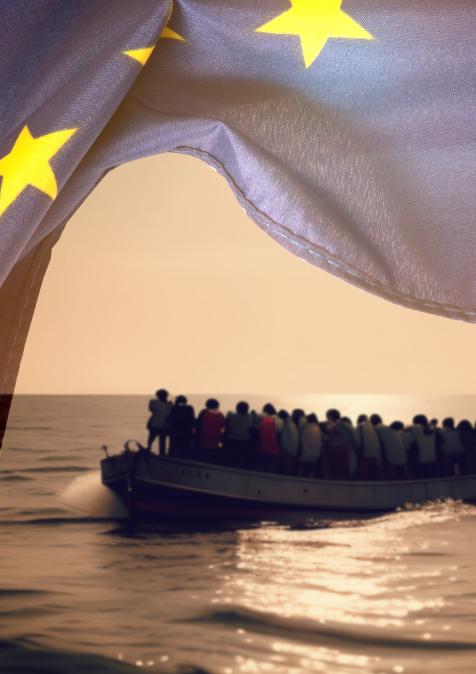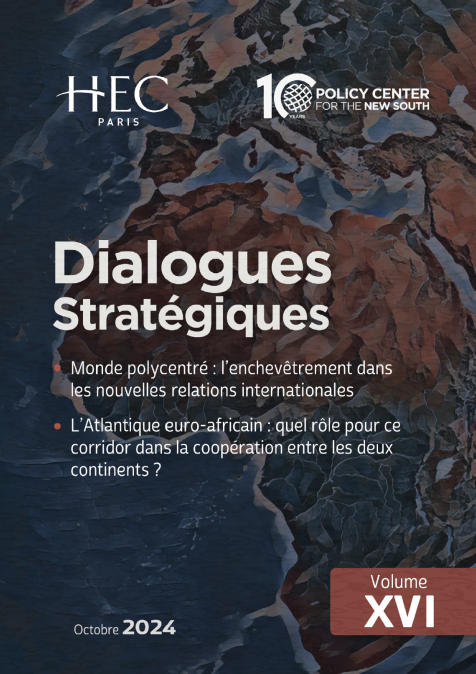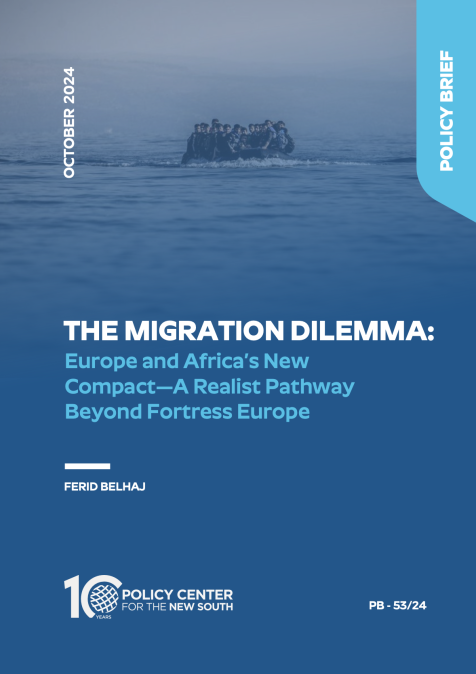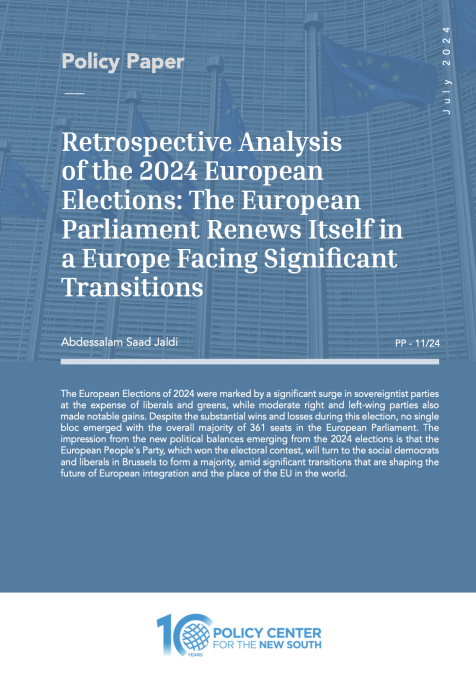Publications /
Opinion
The headline itself was not surprising: ”Egyptians face peril at sea in dangerous new Exodus to Europe”. The path, from hidden Egyptian ports to a neighboring Libyan landing spot and then to the Italian coast, has been tempting thousand Egyptians years ago, but recently, and apparently ever since, reported Ruth Michaelson in the British “Guardian” (December 18, 2022), the escape route has been “resurrected”, more than 20,000 Egyptians arrived last year in Italy via Libya, about three times the number who crossed the Mediterranean Sea the year prior.” According to data from the European Union Asylum Agency, reported Africa News ( June 30, 2023) “in 2022, one in five migrants arriving in Italy was Egyptian, and according to Rome, Egyptians are the largest group of arrivals in Italy, accounting for a third of all unaccompanied children”. In a “Displacement Tracking Matrix” by the International Organization for Migration (IOM) on European arrivals, Egypt ranked in the top ten (October 16, 2023), with 8,895 arrivals for this year. ”Unlike Syrians, South Sudanese, Eritreans or Yemenites, Egyptians are not trying to save their lives by escaping war zones”, but, as the Guardian author claims, they are “fleeing a rapidly collapsing economy.” As are Lebanese, Malians, Somalians, Afghanis, Pakistani, Turks, masses of deprived people, desperate, poor, hungry, driven by dreams and illusions, paying thousands of dollars to evil smugglers for a boat ride towards the stars of ever shining light, often ending as feed for sharks. They ignore rumors of disasters on the high sea, of derelict boats sinking, which were sorted out by their owners to be used for lightening the stove in a village hut, later turning out as the devil’s freighter. Some, wandering from the lost regions of Africa to a departure point in Libya or Morocco’s south, do not know, or care, that they will face “the world’s deadliest migration route” (Aljazeera, August 16, 2023). Until October 16 of this year 225,879 migrants reached Europe’s land, stated the “IOM Migration Flow to Europe” (October 16, 2023). Of those survivors 207,150 arrived by sea, confirmed the IOM, 2,806 died or are missing. New routes have been established, even from Senegal, or The Gambia, 1,700 kilometers away from the Spanish Canary Islands, people tempt the devil daring the crossing from Lebanon to Greece or Italy, Cyprus, or Malta. In 2022, the IOM reported 4,448 citizens of Bangladesh were intercepted and returned to Libya while crossing the Mediterranean Sea. As of December 2022, (IOM, snapshot, December 31, 2022) 1,653 Bangladeshis are lingering in Libya, several thousands are suffering in local camps, more than 7,000 kilometers away from home. Since the Egyptian military did take over the fishing industry, many of the former owners transferred their activity to human smuggling, noted Ruth Michaelson. “We have seen increased crossings from Tobruk, Libya, since the end of October, when several boats with a lot of people aboard left from Tobruk and reached the coast of Sicily”, said Maurice Stierl of Alarm Phone an organization that helps migrants who find themselves in distress daring the Mediterranean crossing.
Largest mass migration in modern history
”We are talking about boats with 400 to 700 people onboard, incredible large, old fishing vessels repurposed for crossing. It’s a recent development that has intensified.” (Guardian) In June one of these vessels, allegedly observed for hours by the Greek coast guard without offering assistance, sank off the coast of Pylos, Messenia, with an estimated 700 migrants from Egypt, Palestine, Syria and Afghanistan on board, of whom 500 were presumed dead. In October of last year, the EU signed yet another deal with Egypt intended to curb migration, this time with a EUR 80 million grant to further bolster the Egyptian coast guard and naval forces and stop the flow of people, a task which seems without hope or limit. Desperation battles fear, imagination and financial opportunism conquer bureaucratic obstacles, as seen in the decade since former Libya’s leader Muammar Gadhafi was killed during a NATO intervention in his country and the beginning of the Syrian war- the start of one of the largest mass migrations in modern history - and no end in sight. Migrants, starving of hunger, manage to collect funds, allowing them one, possibly the only one ever, paying attempt to reach the assumed paradise EU, or UK or USA, anywhere with food, a future for their children, a life which is human, regardless of what that implies or includes. Freedom, religion, democracy, dignity, and security. The Policy Center for the New South shed the light on these phenomena, for example analyzing on June 28 of this year in a podcast ”Foresight & Migration: Perspectives and limitations”, solutions and dilemmas of migration management. Ivan Martin wrote in a Policy Paper, “New Pact of Migration and Asylum in the European Union: What stakes for the Maghreb and Africa”(January, 2021): “It is another step in the politically toxic attempts to reconcile the many fractures dividing Europe around the issue of migration: between the Mediterranean countries of first arrival of most irregular migrants (Spain, Italy, Malta, Greece) and those countries of final destination preferred by migrants themselves, between hosting countries and those Eastern European countries (Poland, Hungary, Czech Republic, and lately also Slovenia) that are not ready to host refugees”. Tommasi Foti, the lower parliamentary house whip for the Brothers of Italy party, Prime minister Georgia Meloni’s movement, told Italian television channel Tgcom24, the nation’s secret intelligence service estimated that 680,000 migrants held in Libya, many of them in detention camps, were eager to sail across the Mediterranean Sea in smuggler boats. Foti warned: “Europe can’t look the other way.” While the intelligence service’s assessment sparked alarming headlines in Italy (Voice of America, March 12, 2022) Flario Di Giacomo of the International Organization of Migration corrected the alarming figures by explaining that the number advanced was valid for all migrants accounted for in Libya, of whom “only a minimum part wants to leave, and only a minimum part succeeds in leaving.”
Underaged and unaccompanied
Almost 680 000 migrants from over 41 nationalities were identified by the IOM in Libya, ”the majority of migrants are from Niger, Egypt, Sudan, Chad and Nigeria.”(August 30, 2023, “Migration flows on the Central Mediterranean route”). There were an estimated 117,156 Egyptians in the North African country, noted the “European Union Agency for Asylum” (July 5, 2022) in its “Migration Drivers Report”. Neither controls of the European border police “Frontex”, which has planned to extend its activities as far as the Atlantic facing Senegal and The Gambia, nor possible satellite or drone observations of the major smuggler routes, “Eastern Mediterranean” (Bulgaria, Cyprus and Greece), “Central Mediterranean” (Italy and Malta),”Western Mediterranean”(Peninsular coast of Spain, Balearic Islands, Spanish enclaves of Ceuta and Melilla) “Western African Route”(Canary Islands of Spain) have been able to halt the traffic and the drowning of migrants, on fishing boats for example, which departed the coastal town of Kafountine in Southern Senegal on June 27 with an estimated 200 migrants from Mali, Morocco, Côte d’Ivoire, Senegal and other Sub Saharan regions aboard, embarking on a dangerous journey along the West African coast. Two other boats, 69 and 60 passengers, also were declared missing (Africanews, July 10, 2023). In 2022, confirmed the IOM, at least 559 lives were lost during the attempts to reach the Spanish Islands by boat, but last year 12,955 managed to reach the shores of the Balearic Islands by sea, many of them underaged and unaccompanied-Moroccans, Algerians, and kids from the Republic of Guinea. In the first two weeks of October of this year, noted Der Spiegel Online (October 17, 2023) 8,561 migrants reached one of Spain’s seven Atlantic islands, in particular the small island of El Hierro. From January 1 to October 15, 23,537 migrants landed on the Spanish islands. Spain, Italy and Greece are under pressure, forced to provide shelter, possibly asylum or a long administrative procedure to deport illegals. Yet, another EU member is in pain as much, if not more, since Cyprus is economically fragile and weakened by ever more arriving immigrants. As Katarzyyna Rybarczyk, revealed in October 2021, the EU nation has “the highest number of asylum seekers per capita.” The political correspondent “Immigration Advise Service”, an immigration law firm based in the UK operating globally and providing legal aid to forcibly displaced persons, explains the lack of options in Lebanon as a reason why Lebanese citizens and refugees from Syria, which escaped their war-torn country, are seeking a better life on the 1.2 million population- island, just 276 kilometers away. The more refugees arrive on the isle, writes Rybarczyk, “the more reluctant it is to accept them”, even signing in 2020 a deal with Beirut, which allows Cyprus to send back people when they reach the island by boat. Others are taken to detention camps, where they find themselves detainees without the possibility of applying for asylum. “The most recent pushback”, confirms the immigration expert; “happened in August when Cypriot naval police vessels stopped 88 Syrian refugees just 15 kilometers from the coast, placed them on a boat and sent them back to Lebanon.” (Social Europe, October 21, 2021) Early September, during an anti-immigration march in Cyprus’ second largest city, Limassol, Syrian migrants and locals were battling their frustrations out in the streets, Cypriots shouting “out, out, out” and painting slogans on walls (Aljazeera, September 3, 2023) as “Refugees not welcome.” Data shows that Cyprus has a migrant and refugee population estimated six percent of its population, whereas the EU shows an average of about one percent. More than 10,600 people applied for asylum from march to July of 2022, compared with 4,976 persons in the same period this year. A sign of relieve, a message that the anti-immigration actions finally worked? Police data, reported “Aljazeera”, shows a rise in the number of migrants and refugees arriving by sea, with “more than 500 landing on 45 fishing boats or inflatable dinghies in the past three months, the vast majority from Syria”.









